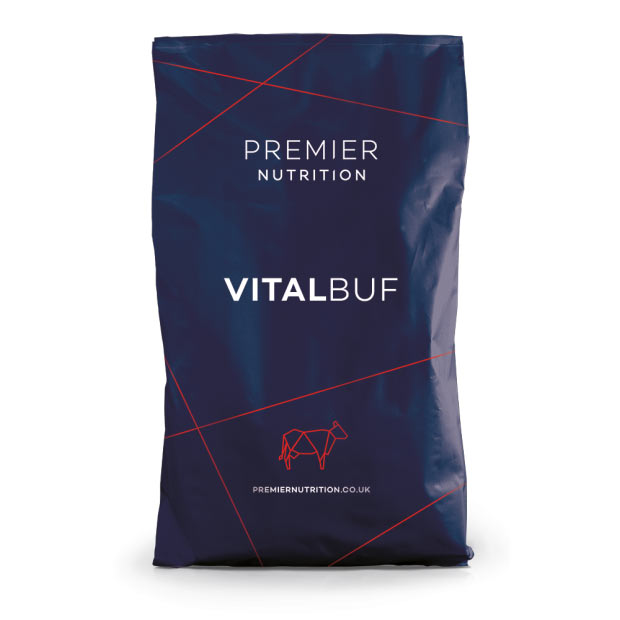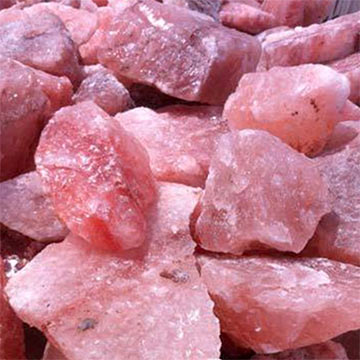Rumen Buffers
Acid Buf
Acid Buf is a highly efficient rumen conditioner derived from calcareous marine algae.
It’s unique honeycomb structure provides a large surface area for maximum buffering capacity.

What does it do?
Its structure allows a gradual breakdown which provides buffering for over 8 hours. Significantly reduced time spent below 5.8pH and therefore reduces sub-acute & acute ruminal acidosis. This increases volatile fatty acid yield and increases feed efficiency. Acid Buf also provides a natural, highly soluble, bioavailable source of Magnesium & Calcium.
Key benefits
Over 4 published trials, Acid Buf has been shown to:
- ↑ Feed efficiency up to 10%.
- ↑ Milk yield by up to 2.5litres/cow/day.
- ↑ Milk fat & protein.
- ↑ DLWG over 5%.
- Return on investment of over 6:1*.
*based on an additional 1.5litres @25ppl
Application
Acid Buf can be supplied through farmpack, blend & compound.
| Recommended Inclusion | |
|---|---|
| Dairy | 80g/head/day |
| Beef | 50g/head day |
| Dry cows | 40-50g/head/day |
How does Acid Buf compare?
Vs Sodium bicarbonate, trials have shown Acid Buf:
- Buffers over 8hours compared with sodium bicarb’s 30 minutes.
- Neutralise over twice the amount of acid.
Acid Buf has been shown to have significantly higher and more consistent buffering capacity than other competitor combination buffers.
Vitalbuf
A package of fast-acting & prolonged buffering agents to help provide long term rumen stability.
- Provides both rapid and long-term buffering action.
- Helps to promote higher levels of milk constituents, particularly fat.
- Helps to reduce the risk of acidosis and its consequences.
Rations for highly productive dairy cows can often lead to wide variations in the acid base balance of the rumen, the effects of which include reduced milk yield, reduced milk quality, acidosis and lameness.
VITALBUF’s combination of buffering agents help to rapidly to neutralise any immediate acid load, as well as combating any acid produced during fermentation. In addition, the long-term rumen modifiers in VITALBUF go on to provide long term rumen stability and microbial stimulation.

Sodium Bicarbonate
Sodium Bicarbonate is the world’s most popular Rumen Buffer, for good reason – it works very well and is highly cost-effective.
Why to feed Sodium Bicarbonate to Ruminants:
Rumen digestive function can be impaired by feeding rations high in cereal, short chop forage, low-pH silage or any other high-starch feeds. If the pH drops low enough then sub-clinical acidosis has many down sides. You can assist the buffering capacity of the cow’s saliva by feeding Sodium Bicarbonate, which dramatically improves digestion and reduces risk of acidosis.
Feeding Sodium Bicarbonate has been shown to:
- Improve forage intakes
- Enhance fibre digestion
- Promote higher milk yields
- Enhance milk quality
- Increase butterfat
- Improve feed conversion rates
- Improve liveweight gain
Lump Rock Salt
Red lump rock salt for farm use is a common way of promoting additional dry matter intake. Use lump rock salt to drive intake in TMR dairy rations during lactation.
Do not feed to dry cows!
Lump rock salt is also effective at driving water intake (helps to reduce acid load in the rumen). Beware of sodium “oversupply” situations in caustic treated wheat diets. A nutritionist should be consulted before feeding.

Feed Grade Urea
Urea is an economic non-protein nitrogen (NPN) source for boosting protein levels in ruminant rations. It is also a highly effective preservative for Wholegrain and Wholecrop Cereals.
Urea as a Protein Source
Adequate protein supply to the rumen is essential to enable micro-organisms to utilise dietary energy, in particular from forage. Ammonia is a major source of nitrogen for the synthesis of microbial protein in the rumen. Urea when fed, is readily converted to Ammonia by urease enzyme in the rumen, thus providing an economic source of Rumen Degradable Protein.
- Cost-effective concentrated protein source (287% crude protein)
- Effective ‘protein booster’ for low protein feeds
- Especially useful where maize and cereals are used in complete diets inherently low in protein.
Typical Anylsis (Dry Matter Basis except DM)
| Dry Matter | 99% |
| Crude Protein | 290% |
| Oil | Nil |
| NDF | Nil |
| Starch | Nil |
| Sugar | Nil |
| ME | Nil |
Product Detail
- Highly concentrated effective protein source for adult ruminants.
- Supplies rapidly available nitrogen.
- Good balancer for low protein, high energy feeds.
- Can be used to preserve moist forage or grain.
- Alkaline pH results from hydrolysis with water.
- Very toxic if offered at even moderate levels.
Handling & Storage
As with other dry feeds, Feed Grade Urea should be stored in cool, dry conditions. Usually available in bags. Care should be taken to ensure correct amounts are weighed into rations and that the straight material is kept well away from animal contact.
Feeding
Urea provides a good source of Effective Rumen Degradable Protein (ERDP) to adult ruminants, but care should always be taken to ensure diets are correctly balanced. As feeding levels are very low due to its high ‘protein’ content, it is essential that Urea be mixed thoroughly with other feeds prior to offering to animals.
Magnesium Chloride Flakes
Magnesium Chloride flakes contain 12% magnesium. They are a suitably easy source of readily available magnesium to be fed to dry cows or lactating cows when either a milk fever challenge or grass staggers challenge is suspected. Magnesium chloride flakes are highly soluble and hence can also be dispersed through the water trough if required.
Limestone Flour
Limestone flour is used as a supplementary source of calcium. Limestone Flour is a fine white powder, nominally less than 300 microns. The material has been crushed, milled, dried and screened, then milled and classified again to produce a product of exceptional purity and consistency.
Mistakenly ground limestone flour has often been recommended as a rumen buffer fed at 100gms – 200gms per cow on the grounds of price. It is well absorbed at the very low pH seen in the true stomach but is largely insoluble above about 5.5 pH. Limestone flour is therefore totally unsuitable as a rumen buffer and should not be used as such.
